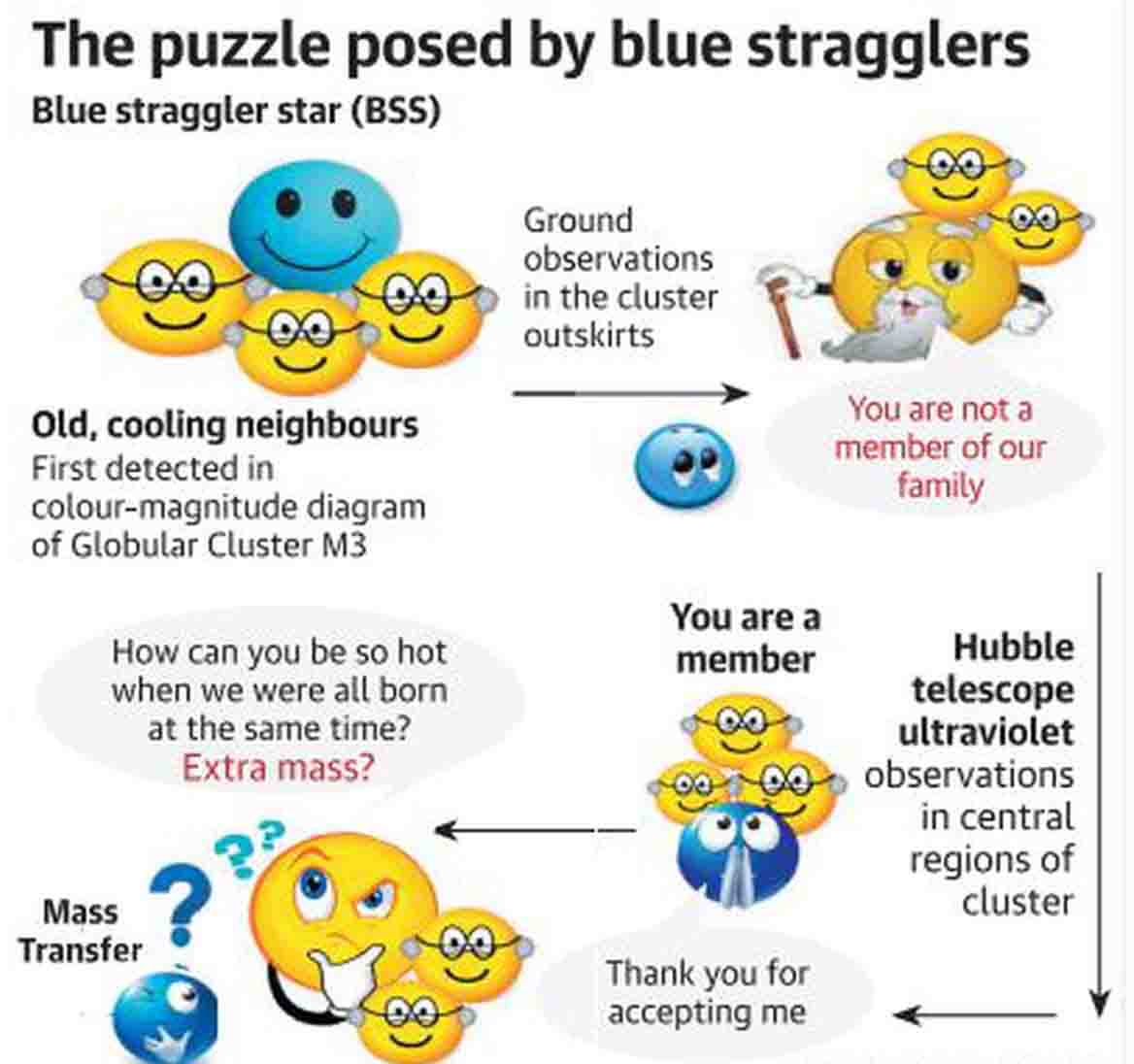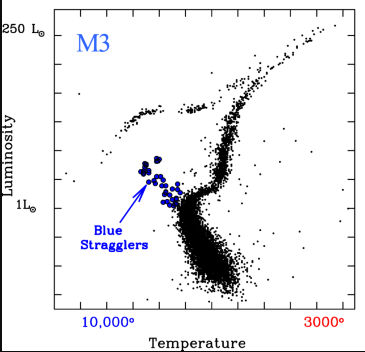Science & Technology
Blue Straggler Stars
- 25 Apr 2022
- 5 min read
For Prelims: Blue Straggler Stars, Indian Institute of Astrophysics, Astrosat, Red giant, White dwarf, Hertzsprung-Russell diagram
For Mains: Initiatives of Department of Science and Technology, Evolution of Stars
Why in the News?
Recently, Scientists at Indian Institute of Astrophysics, Bengaluru, have found support for one way to understand peculiarity about Blue Straggler Star.
- The researchers made use of the observations by the UVIT instrument (Ultraviolet Imaging Telescope) of Astrosat, India’s first science observatory in space.
- Earlier in September 2021, in the first-ever comprehensive analysis of blue stragglers, Indian researchers had proposed a hypothesis for the evolution of blue straggler stars.
What are Blue Stragglers and How are they Different?
- Blue Straggler Star are hot, blue, massive stars and seem to have a different trajectory of evolution from the norm.
- There are a few stars that, when they are expected to start expanding in size and cooling down, do just the opposite.
- They grow brighter and hotter as indicated by their blue color.
- Thus, standing out from the cooler red stars in their vicinity in the color-magnitude diagram.
- Since they lag their peers in evolution, they are called stragglers, more specifically, blue stragglers, because of their hot, blue color.
- Allan Sandage (an astronomer with Carnegie Observatories in Pasadena, California) discovered blue stragglers in the globular cluster M3 in 1952-53.
- Most are located at least several thousand light-years away from the sun, and most are around 12 billion years old or more.
- The Milky Way's largest and brightest globular is Omega Centauri.
What are Possible Reasons for this peculiarity?
- Possibility 1: These do not belong to the family of stars in the cluster, and hence not expected to have the group properties.
- Possibility 2: if they belong to the group, the evasive behavior is due to these stars gaining mass from a binary companion.
- In this second scenario, the straggler draws matter from the giant companion star and grows more massive, hot and blue, and the red giant ends up as a normal or smaller white dwarf.
- In the research, the scientists found conclusive evidence of white dwarf companions to blue stragglers.
- Possibility 3: Straggler draws matter from a companion star, but there is a third star that facilitates this process.
How is the Age or Evolution of a Star Studied?
- To study the behavior of the star, a graph of the color of a star against its magnitude is plotted.
- This gives an indication of star’s surface temperature, which is related to the total energy given off by it.
- If all the stars are done in a globular cluster, many stars are seen to find a place within a band known as the main sequence.
- This graph is called the Hertzsprung-Russell diagram.
- This diagram plots the temperature of stars against their luminosity or the color of stars against their absolute magnitude.
- It shows a group of stars in various stages of their evolution.
- For example, our Sun is what is called a main sequence star.
- Given its mass and age, it is expected that once it has converted all its hydrogen into helium, its core will get denser, while outer layers expand.
- So, it will bloat into a red giant.
- After this phase, its fuel is spent, it will shrink, becoming a smaller, cooling star called a white dwarf star at the end of its life.
- Given its mass and age, it is expected that once it has converted all its hydrogen into helium, its core will get denser, while outer layers expand.
What is Indian Institute of Astrophysics?
- The IIA with its headquarters in Bengaluru is an autonomous Research Institute wholly financed by the Department of Science and Technology, Government of India.
- IIA conducts research primarily in the areas of astronomy, astrophysics and related fields.
- It was established in 1971.






